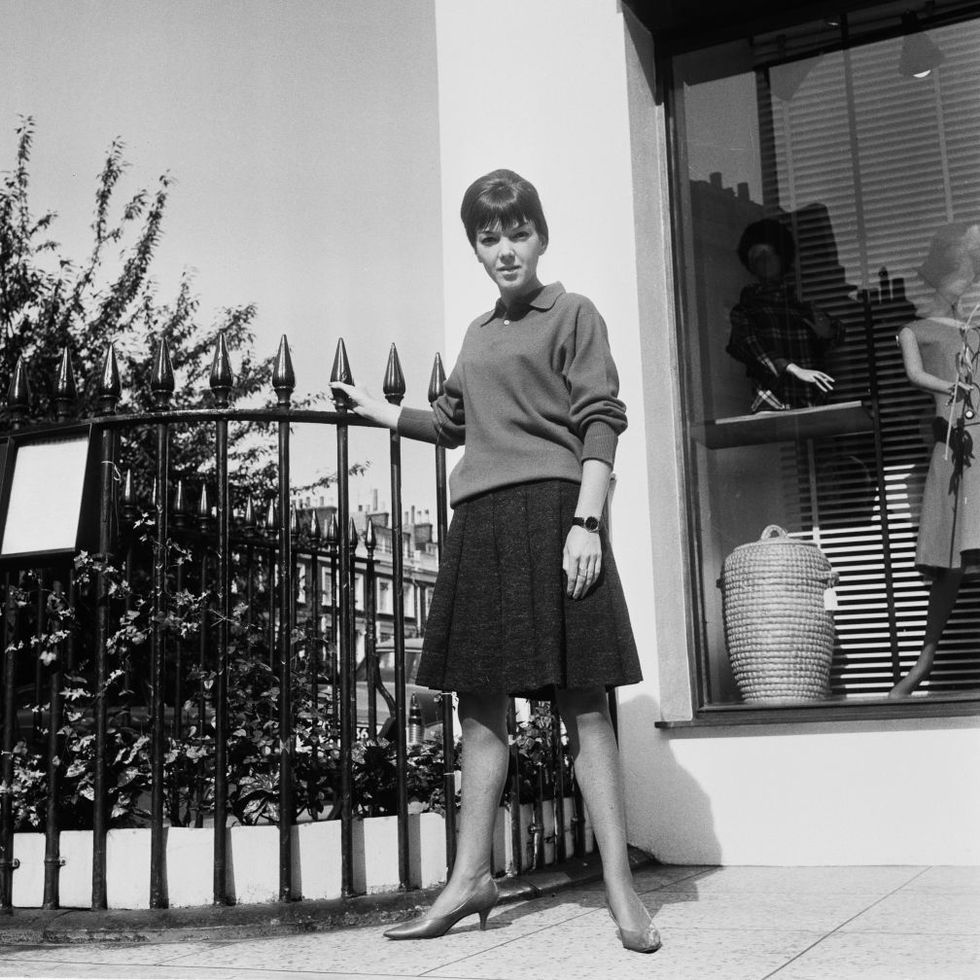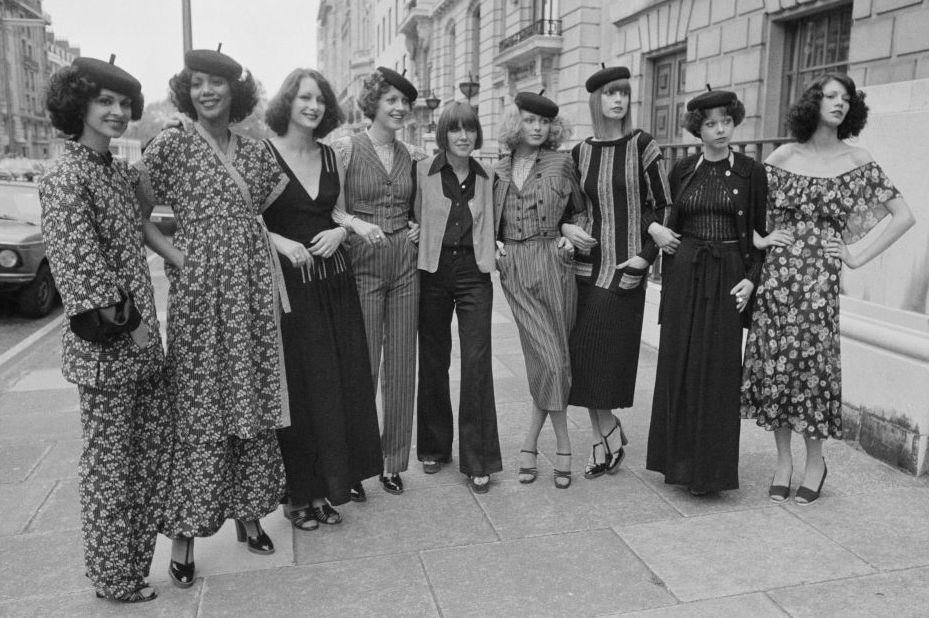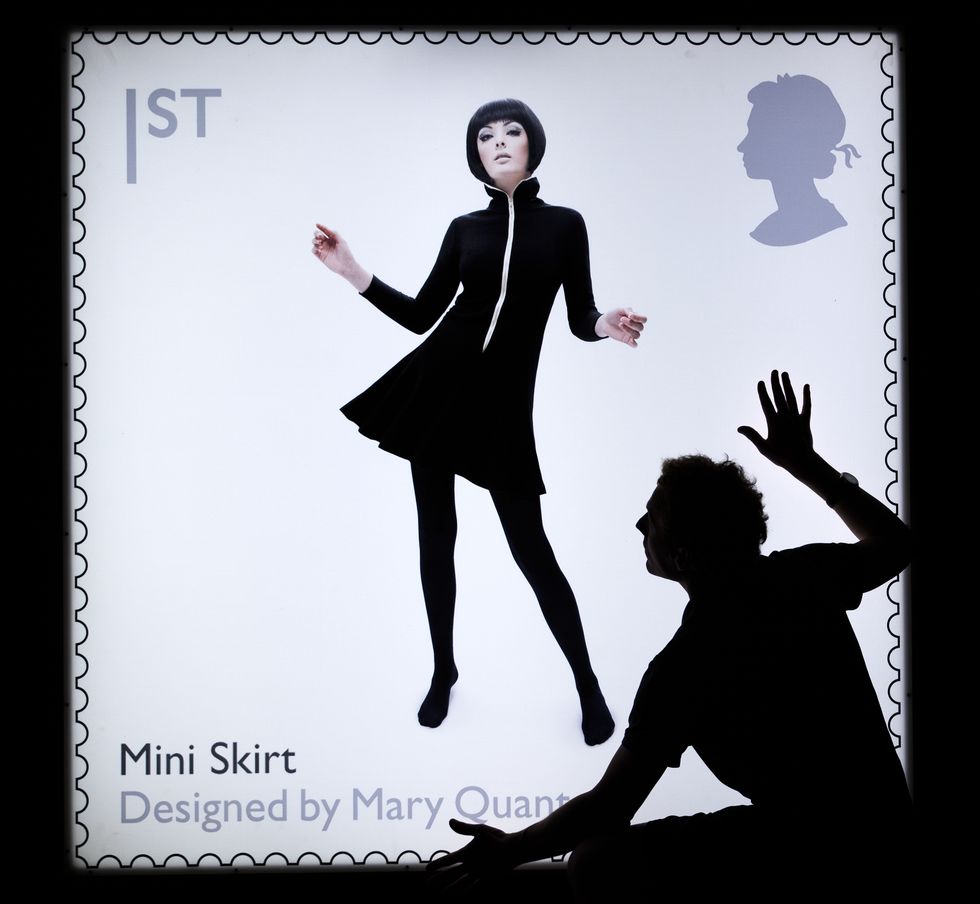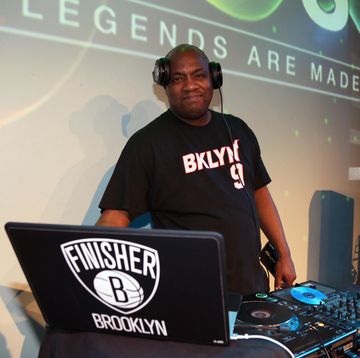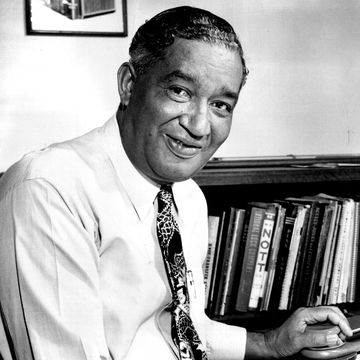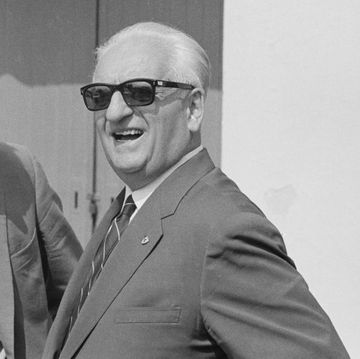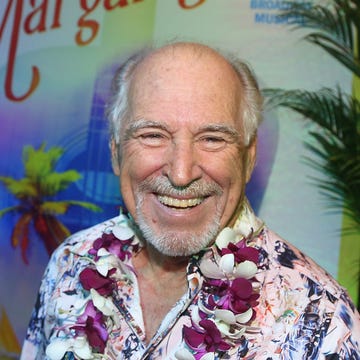1930-2023
Who Was Mary Quant?
Immortalized by fashion iconography as the originator of the miniskirt, Dame Mary Quant had an art school background and began designing and manufacturing her own clothes in the late 1950s. The London designer had one distinct advantage over previous designers: She was a contemporary of her clients, rather than of an older generation. Convinced that fashion needed to be affordable to be accessible to the young, she opened her own retail boutique called Bazaar on the Kings Road in 1955, introducing the “mod” era and the “Chelsea look.”
Quick Facts
FULL NAME: Barbara Mary Quant
BORN: February 11, 1930
DIED: April 13, 2023
BIRTHPLACE: London, England
SPOUSE: Alexander Plunket Greene (1957-1990)
CHILDREN: Orlando
ASTROLOGICAL SIGN: Aquarius
Early Life
Barbara Mary Quant was born on February 11, 1930, in London’s Blackheath neighborhood to Welsh teachers Jack and Mildred Quant, who were originally from mining families. From an early age, Mary knew she wanted to work in fashion. She told an interviewer in 1985 that she didn’t like her hand-me-down clothes, feeling “they weren’t me,” and tried to make her own clothes from the age of 5.
She went to Blackheath High School before studying illustration at Goldsmiths College, a compromise with her parents who felt fashion was too risky an industry. Quant received a diploma in art education from Goldsmiths and went on to become an apprentice couture milliner, at which point she began designing and manufacturing clothes.
She met her future husband and business partner, Alexander Plunket Greene, at Goldsmiths. The couple wed in 1957 and had a son, Orlando, together in 1970. The two were happily married until Plunket Greene’s death in 1990.
Famed Fashion Designer
Although she had always wanted to go to fashion school, Quant later said she felt lucky that she didn’t, explaining that it gave her more creative license and allowed her to consider average consumers in her designs. She sought to make clothes that were easy to move in and even run in.
Quant had another distinct advantage over previous designers: She was a contemporary of her clients, rather than of an older generation. Convinced that fashion needed to be affordable to be accessible to the young, she opened her retail boutique Bazaar on the Kings Road in 1955, with the help of Plunket Greene and former solicitor Archie McNair, introducing the “mod” era and the “Chelsea look.” The best-selling items were white plastic collars used to brighten up black dresses or T-shirts and black stretch leggings.
In her quest for new and interesting clothes for Bazaar, Quant wasn’t satisfied with the range of clothes available and decided that the shop would have to be stocked with clothes she made. Knee-high white patent plastic lace-up boots and tight skinny rib sweaters in stripes and bold checks, which came to epitomize the “London look,” were the result. Along with trendy fashion shows and window displays, her original clothing—specifically designed for a youth-oriented market—secured her reputation.
Quant has sometimes claimed that she invented the miniskirt but other times has cited the girls who visited her shops as the true inventors, as they wanted their skirts shorter and shorter. These skirts were also in development by other designers, chiefly André Courrèges, but Quant’s is the name most associated with them. She even named the garments after her favorite make of car: the Mini.
Following on the success of the first Chelsea store, which counted members of The Beatles among its customers, a second Bazaar opened in Knightsbridge in 1961. By 1963, Quant was exporting to the United States, going into mass-production to keep up with the demand, and the Mary Quant worldwide brand was born. Stateside, her designs were sold in JCPenny department stores. She also started Ginger Group, a cheaper clothing line.
The mid-1960s saw Quant at the height of her fame, when she created the micro-mini and the “paint box” makeup—a ready-to-use palette of cosmetics—of 1966. Her shiny plastic raincoats and little gray pinafore dresses came to epitomize the 1960s fashion era. She expanded her brand further into a range of original patterned tights, other fashion accessories, and a range of cosmetics.
In 1966, Quant received her Order of the British Empire for her contribution to the fashion industry. She arrived at Buckingham Palace to accept the honor in a signature short jersey dress and cut-away gloves. That same year, she wrote her first book Quant by Quant.
Late 1960s and Beyond
Quant went on to popularize hot pants in the late ’60s and opened a third London boutique in 1967. Into the 1970s and ’80s, she concentrated on household goods, more clothes, and makeup. She even created and sold a children’s doll named Daisy, after her company’s floral logo. Her cosmetics were licensed internationally, with more than 200 Mary Quant Colour shops in Japan by 2000. That year, Quant resigned as director of Mary Quant Ltd. after a Japanese buyout. She continued working with the company as an advisor.
In 1988, she designed the interior of the Mini Designer, a limited edition car that incorporated black and white striped seats with red trimming and seatbelts. Quant also continued writing, following up her first autobiography with more books about makeup and fashion in the ’70s, ’80s, and ’90s. Her final book, Mary Quant: My Autobiography, released in 2012.
Honors and Awards
Quant’s first major award came in 1963. The Sunday Times honored her with its International Award. In 1966, she received her Order of the British Empire for her contribution to the fashion industry and later, in December 2014, became a dame. The British Fashion Council presented her with its Hall of Fame Award in 1990. One of her outfits appeared on a British postage stamp in 2009.
Two major retrospectives have paid tribute to her fashion contributions. From November 1973 to June 1974, the London Museum held an exhibition called Mary Quant’s London. Decades later, the Victoria and Albert Museum, also in London, created its own 120-piece exhibit that focused on the first 20 years of her career. It ran from April 2019 through February 2020 and was shown at the Taipei Fine Arts Museum in summer 2022.
Death and Legacy
Quant died at her home in Surrey, outside of London, on April 13, 2023, at age 93.
An integral part of the Swinging Sixties, Quant was known for her bob haircuts by stylist Vidal Sassoon, edgy designs, and egalitarian attitude toward fashion. “Snobbery has gone out of fashion, and in our shops, you will find duchesses jostling with typists to buy the same dress,” Quant said. She was also one of the first celebrity designers who built a brand around her name.
In 2021, Sadie Frost directed a documentary called Quant about the fashion designer’s life and legacy. It featured commentary from model Kate Moss, fashion designer Vivienne Westwood, and British Vogue Editor-in-Chief Edward Enninful, among others.
Quotes
- I feel fashion is about life. It’s about everything. It’s about the way we sit, the way we move, the way we talk, the style of voice. It’s about food, what we eat. It’s there—it’s about everything.
- Fashion’s always changing. It’s always about the next thing.
- I believe that fashion is for real-life people and not for a small minority.
- A woman is as young as her knees.
- I think the point of fashion is not to get bored of looking at somebody. I think the point of clothes for women should be: one, that you’re noticed; two, that you look sexy; and three, that you feel good. I can’t see that we wear them to keep warm.
- Snobbery has gone out of fashion, and in our shops, you will find duchesses jostling with typists to buy the same dress
Fact Check: We strive for accuracy and fairness. If you see something that doesn’t look right, contact us!..
The Biography.com staff is a team of people-obsessed and news-hungry editors with decades of collective experience. We have worked as daily newspaper reporters, major national magazine editors, and as editors-in-chief of regional media publications. Among our ranks are book authors and award-winning journalists. Our staff also works with freelance writers, researchers, and other contributors to produce the smart, compelling profiles and articles you see on our site. To meet the team, visit our About Us page: https://www.biography.com/about/a43602329/about-us
Adrienne directs the daily news operation and content production for Biography.com. She joined the staff in October 2022 and most recently worked as an editor for Popular Mechanics, Runner’s World, and Bicycling. Adrienne has served as editor-in-chief of two regional print magazines, and her work has won several awards, including the Best Explanatory Journalism award from the Alliance of Area Business Publishers. Her current working theory is that people are the point of life, and she’s fascinated by everyone who (and every system that) creates our societal norms. When she’s not behind the news desk, find her hiking, working on her latest cocktail project, or eating mint chocolate chip ice cream.

